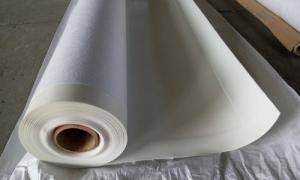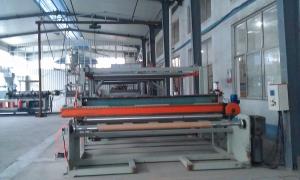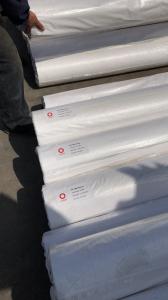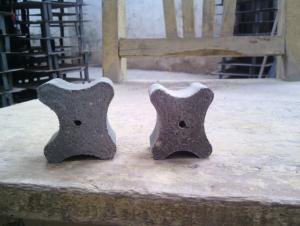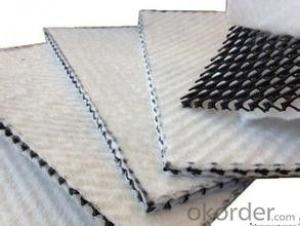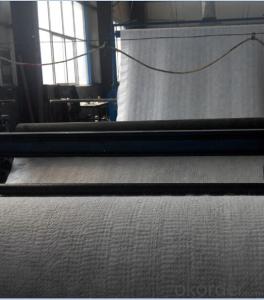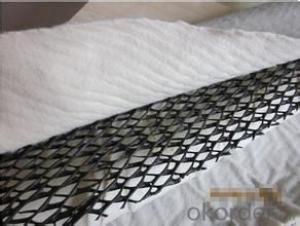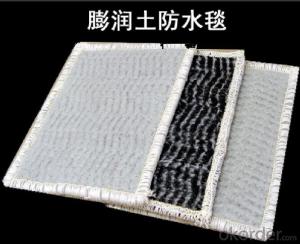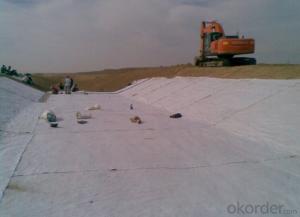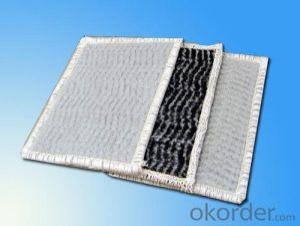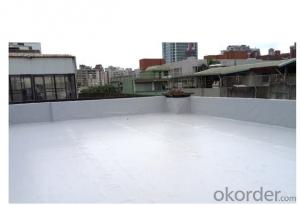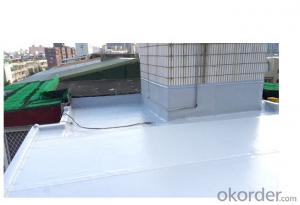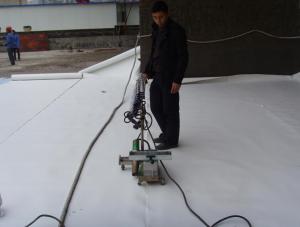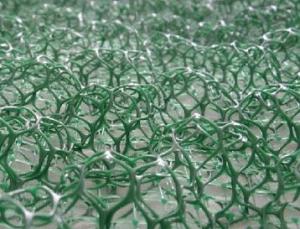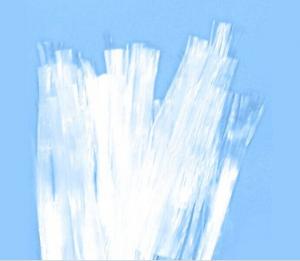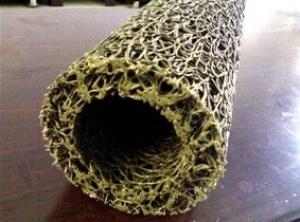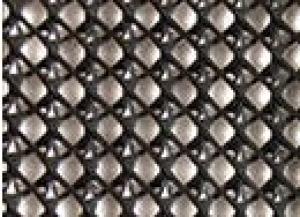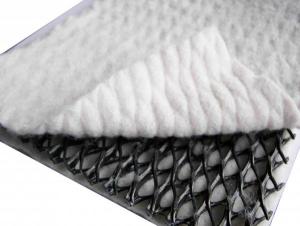PVC Waterproof Membrane/PVC Membrane/PVC Roof Membrane
- Loading Port:
- Qingdao
- Payment Terms:
- TT or LC
- Min Order Qty:
- 1000 m²
- Supply Capability:
- 500000 m²/month
OKorder Service Pledge
OKorder Financial Service
You Might Also Like
PVC Waterproof Membrane Introduction
Polyvinyl Chloride (PVC) waterproof membrane is a new polymer waterproof membrane which is made from polyvinyl chloride resin, and mixed with plasticizer, filler, antioxygen, ultraviolet absorber and other auxiliaries.
PVC Waterproof Membrane Specification
Length | 20m/roll or customized |
Width | 2.05m |
Thickness | 1.2mm; 1.5mm; 2.0mm |
If exposed | Exposed, Non-exposed |
Type | Homogeneous, Reinforced with fabric backing |
Color | White/Grey or customized |
PVC Waterproof Membrane Technical Data Sheet
PVC Waterproof Membrane | Standard: GB12952-2011 | ||||||
NO. | Item | Unit | Value | ||||
H | L | P | |||||
1 | Resin Thickness on Middle Mesh ≥ | mm | - | - | 0.4 | ||
2 | Tensile Properties | Max. Strength ≥ | N/cm | - | 120 | 250 | |
Tensile Strength ≥ | Mpa | 10.0 | - | - | |||
Elongation at Max. Strength ≥ | % | - | - | 15 | |||
Breaking Elongation ≥ | % | 200 | 150 | - | |||
3 | Dimensional Stability after Heat Treatment ≤ | % | 2.0 | 1.0 | 0.5 | ||
4 | Foldability at Low Temperature | -25℃ No cracks | |||||
5 | Watertightness | 0.3Mpa, 2h No penetration | |||||
6 | Resistance to Impact | 0.5kg*m, No penetration | |||||
7 | Resistance to Static Loading* | - | - | 20kgs No penetration | |||
8 | Joint Peel Strength≥ | N/mm | 4.0 or membrane broken | 3.0 | |||
9 | Right Angle Tearing Strength≥ | N/mm | 50 | - | - | ||
10 | Trapezoid Tearing Strength≥ | N | - | 150 | 250 | ||
11 | Water Absorption (70℃, 168h) | After immersing≤ | % | 4.0 | |||
After drying≥ | % | -0.40 | |||||
12 | Aging in Hot Weather (80℃) | Time | 672h | ||||
Appearance | No bubbles, cracks, layering, sticky,holes | ||||||
Max. Tensile Retention Rate ≥ | % | - | 85 | 85 | |||
Tensile Strength Retention Rate ≥ | % | 85 | - | - | |||
Elongation Retention Rate at Max. Tensile ≥ | % | - | - | 80 | |||
Breaking elongation Retention rate≥ | % | 80 | 80 | - | |||
Low Temperature Flexibility | -20℃ No cracks | ||||||
13 | Chemical resistance
| Appearance | No bubbles, cracks, layering, sticky, holes | ||||
Max. Tensile Retention Rate ≥ | % | - | 85 | 85 | |||
Tensile Strength Retention Rate ≥ | % | 85 | - | - | |||
Elongation Retention Rate at Max. Tensile ≥ | % | - | - | 80 | |||
Breaking elongation Retention rate | % | 80 | 80 | - | |||
Low Temperature Flexibility | -20℃ No cracks | ||||||
14 | Artificial aging* | Time | 1500h* | ||||
Appearance | No bubbles, cracks, layering, sticky, holes | ||||||
Max. Tensile Retention Rate ≥ | % | - | 85 | 85 | |||
Tensile Strength Retention Rate ≥ | % | 85 | - | - | |||
Elongation Retention Rate at Max. Tensile ≥ | % | - | - | 80 | |||
Breaking elongation Retention rate | % | 80 | 80 | - | |||
Low Temperature Flexibility | -20℃ No cracks | ||||||
Remarks: *Resistance to static load is for PVC membranes used on roofing *The time of artificial aging of single-ply roofing membrane is 2500h. *Non-exposed membrane does not require determination of artificial aging. | |||||||
PVC Waterproof Membrane Property
1) Excellent aging resistance.
2) Root resistant penetration, specially used on planting roof.
3) Welding installation. Joints are solid and environment friendly, no pollution.
4) High tensile strength, good elongation and dimensional stability.
5) Good plasticity, easy and suitable for details installation.
6) Fireproof. Fire extinguished out of the ignition resource.
7) Surface is smooth, no fading and dirty resistant.
PVC Waterproof Membrane Application
--All kinds of roofs, such as steel structure roof, planted roof etc.
--Underground engineering, such as building basement, subways, tunnels, air raid shelter, etc.
--Other projects like artificial lake, dam, water reservoir, grain storehouse, etc.



- Q: Are earthwork products resistant to chemical spills and contamination?
- Yes, earthwork products are generally resistant to chemical spills and contamination. These products, such as geomembranes, geosynthetics, and geotextiles, are designed to provide a barrier against chemicals, preventing them from seeping into the ground or water sources. They are often used in applications where chemical resistance is crucial, such as landfill liners, containment ponds, and industrial waste management facilities. However, the specific chemical resistance may vary depending on the type and quality of the earthwork product used.
- Q: What are the advantages of using geotextile tubes for erosion control on beaches?
- Geotextile tubes offer several advantages for erosion control on beaches. Firstly, they provide a cost-effective solution as they can be easily installed and removed, reducing long-term maintenance costs. Secondly, these tubes are designed to withstand the forces of waves and currents, providing effective erosion protection. Additionally, geotextile tubes are environmentally friendly, as they are made from biodegradable materials that do not harm marine life. Lastly, they can be filled with a variety of materials, such as sand or sediment, allowing for customization based on specific beach conditions.
- Q: Can earthwork products be used in sound barriers?
- Yes, earthwork products can be used in sound barriers. These products, such as soil, clay, or rocks, can be used as building materials in constructing sound barriers to help reduce noise pollution. They can be used to create mounds or berms that absorb and block sound waves, providing an effective barrier between the source of the noise and surrounding areas.
- Q: What are the different jointing options available in earthwork products?
- The different jointing options available in earthwork products include mechanical jointing, such as tongue and groove or interlocking systems, as well as adhesive jointing using sealants or adhesives. Additionally, some earthwork products may also offer flexible joints to accommodate movement and prevent cracking or shifting.
- Q: Can geocells be used for channel protection?
- Yes, geocells can be used for channel protection. Geocells are three-dimensional cellular structures made from high-density polyethylene (HDPE) material, which can be filled with various infill materials such as soil, gravel, or concrete. These cells can be placed in channels to provide erosion control, stabilize slopes, and prevent sediment movement. The interconnected cells form a stable structure that can withstand hydraulic forces, protect the channel banks from erosion, and enhance the overall stability of the channel.
- Q: On the Title of Civil Engineering
- one. No, two Influence, three, to the unit for your registration
- Q: Can geopipes be used for drainage systems?
- Yes, geopipes can be used for drainage systems. Geopipes are commonly used in drainage applications as they provide an efficient and reliable way to collect and transport excess water from various surfaces or areas. The geopipes are designed to have high flow capacity and resist clogging, making them suitable for use in drainage systems for both residential and commercial purposes.
- Q: Are earthwork products resistant to impact and vibration?
- Yes, earthwork products are generally resistant to impact and vibration. These products, such as retaining walls and erosion control systems, are designed to withstand external forces and provide stability in various environmental conditions. They are built using durable materials and engineering techniques that make them capable of withstanding impacts and vibrations without significant damage.
- Q: Can earthwork products be used for creating outdoor seating in parks?
- Yes, earthwork products can be used for creating outdoor seating in parks. These products, such as stone, wood, or concrete, can be shaped and designed to create comfortable and durable seating options for park visitors.
- Q: The Relationship between Water Absorption and Water Content in Civil Engineering Materials
- Application of water absorption in the water to absorb moisture in the air that the method to absorb moisture to the mass ratio or volume ratio of moisture absorption ratio
Send your message to us
PVC Waterproof Membrane/PVC Membrane/PVC Roof Membrane
- Loading Port:
- Qingdao
- Payment Terms:
- TT or LC
- Min Order Qty:
- 1000 m²
- Supply Capability:
- 500000 m²/month
OKorder Service Pledge
OKorder Financial Service
Similar products
Hot products
Hot Searches
Related keywords
